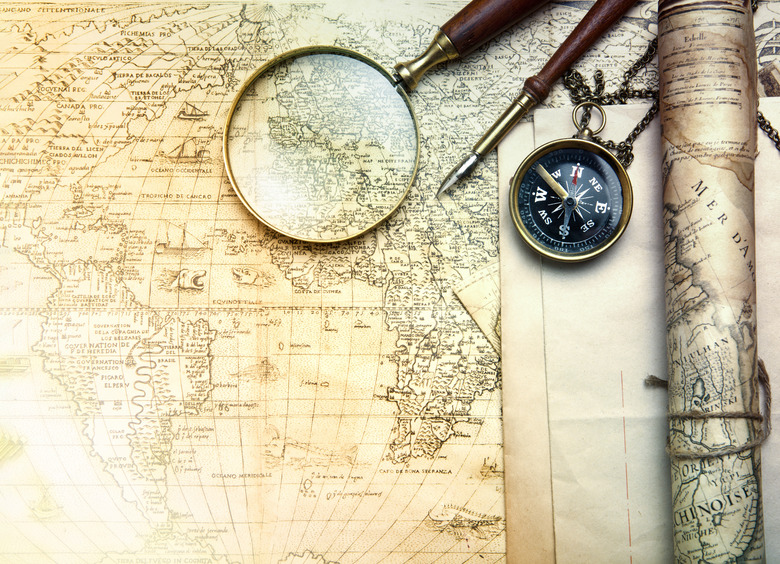How To Create A Map Scale
Map scales are extremely important when determining the actual distance between two places. All map scales, such as verbal, fractional and bar scales, involve ratios because you are comparing the distance between two points on a map and the actual distance between the points. For a smaller location, such as a city, a scale of 1 inch on a map to 30,000 inches on the ground, 2500 feet, is useful. However, for a larger location, such as North America, 1 inch on the map corresponds to a far greater distance on the ground.
Measure the Map and Two Locations
Measure the Map and Two Locations
To create a scale, you must know the physical size of the map. Therefore, you must measure the length of the map. For example, if the map is 12 inches in length, partition the map into one-inch increments. Next, look up the specific distance as the crow flies—a straight-line distance—between two locations on the map. Suppose you are looking at a map of the Northeast region of the United States that's 12 inches in length. The distance between New York City and Philadelphia on the map is exactly one inch. The actual straight-line distance between the two cities is 81 miles. The map scale would be 1 inch = 81 miles.
Creating a Verbal Scale
Creating a Verbal Scale
The verbal scale is the simplest of the three types of map scales because it provides map distance and actual distance. An example of a verbal scale is 1 centimeter = 30 miles. In this instance, 1 centimeter on the map equals a straight-line distance of 30 miles. When teaching map scales to children, introduce the verbal scale before the fractional and bar scales.
Creating a Fractional Scale
Creating a Fractional Scale
Fractional scales are written either as a fraction or as a ratio, because fractions are ratios that compare a numerator to a denominator. Using the above example, the verbal scale 1 centimeter = 30 miles would be written either as 1/30 or 1:30. Fractional scales are more difficult to use because the units are not provided. You need to measure the map length and two specific points on the map to determine the units used on the scale. Some U.S. Geological Survey topographic maps use a fractional scale with a metric length unit such as meters and centimeters.
Creating a Bar Scale
Creating a Bar Scale
Bar scales are also found on official maps. Bar scales are advantageous because the physical representation of the distance on the map is provided. For example, 1 inch could equal 5 miles on a bar scale. Bar scales sometimes confuse children because the first piece of the bar—usually the left end of the bar—is labeled as 1 mile or 1 kilometer, not as 0 miles or kilometers. This occurs because the mapmakers want to divide that first piece of the bar into fractions of miles, such as 1/2 or 1/4 mile, to fine-tune the scale. Bar scales are advantageous because you can change the size of the bar to fit the size of the map.
References
Cite This Article
MLA
Pinzow, Daniel. "How To Create A Map Scale" sciencing.com, https://www.sciencing.com/create-map-scale-5161226/. 5 December 2020.
APA
Pinzow, Daniel. (2020, December 5). How To Create A Map Scale. sciencing.com. Retrieved from https://www.sciencing.com/create-map-scale-5161226/
Chicago
Pinzow, Daniel. How To Create A Map Scale last modified March 24, 2022. https://www.sciencing.com/create-map-scale-5161226/
